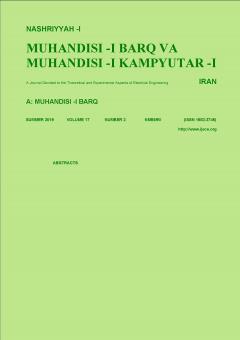-
-
List of Articles
-
Open Access Article
1 - Robust Optimal Stable Fuzzy Controller Design for Stabilization of Electric Vehicle Speed, in Presence of Parametric Uncertainties and External Disturbances
Mohammad Veysi M. Shasadeghi M. R. Soltanpour -
Open Access Article
2 - Harmonic Voltage Reduction by using Droop Controller in Inverters Parallel Operation
B. Fani M. Moazzami E. Farhoodi -
Open Access Article
3 - Optimal Design of Six-Phase Radial Flux Permanent Magnet Synchronous Generator for Small Scale Wind Turbine Applications
M. E. Moazzen S. A. Gholamian -
Open Access Article
4 - Investigation and Analysis of a Soft Switching Multi-Input Converter for Renewable Energy Sources
B. Mazaheri Tehrani M. Khorram Dashti B. Raeisi احسان اديب -
Open Access Article
5 - Balancing the DC Bus Voltage of a Cascaded H-Bridge Converter with Adaptive Carrier Phase Shift Method
M. Rahali Asl M. Saradarzadeh A. R. Namadmalan -
Open Access Article
6 - Selection of an Optimal Equipment Maintenance Strategy Using an Inspection Maintenance Model
M. Samadi H. Seifi -
Open Access Article
7 - Advanced Spatial Modulation
A. Abbasfar H. Tafreshian -
Open Access Article
8 - Design and Simulation of a RGW-Based Microwave (15-18 GHz) Power Divider/Combiner and Its Application to High Power SSPA
A. Karimi Nobandegani S. E. Hosseini
-
The rights to this website are owned by the Raimag Press Management System.
Copyright © 2017-2025







